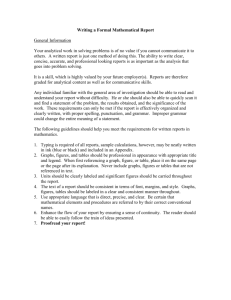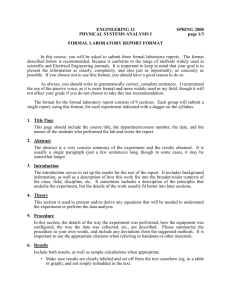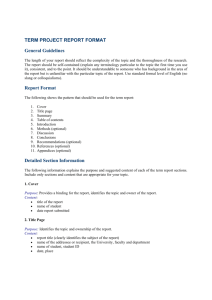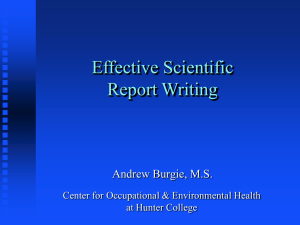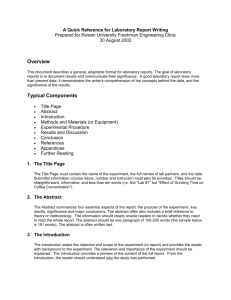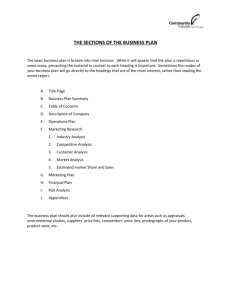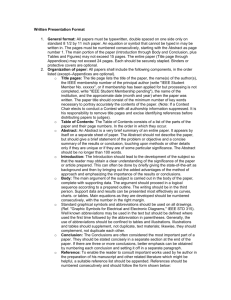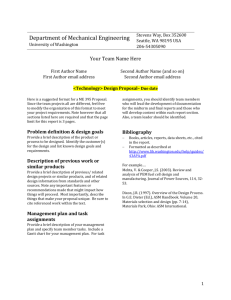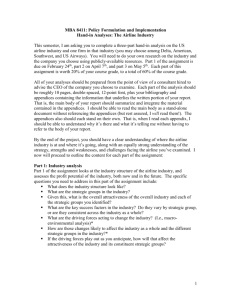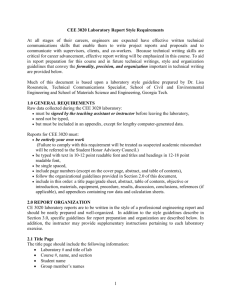Guidelines on Writing a Laboratory Report
advertisement
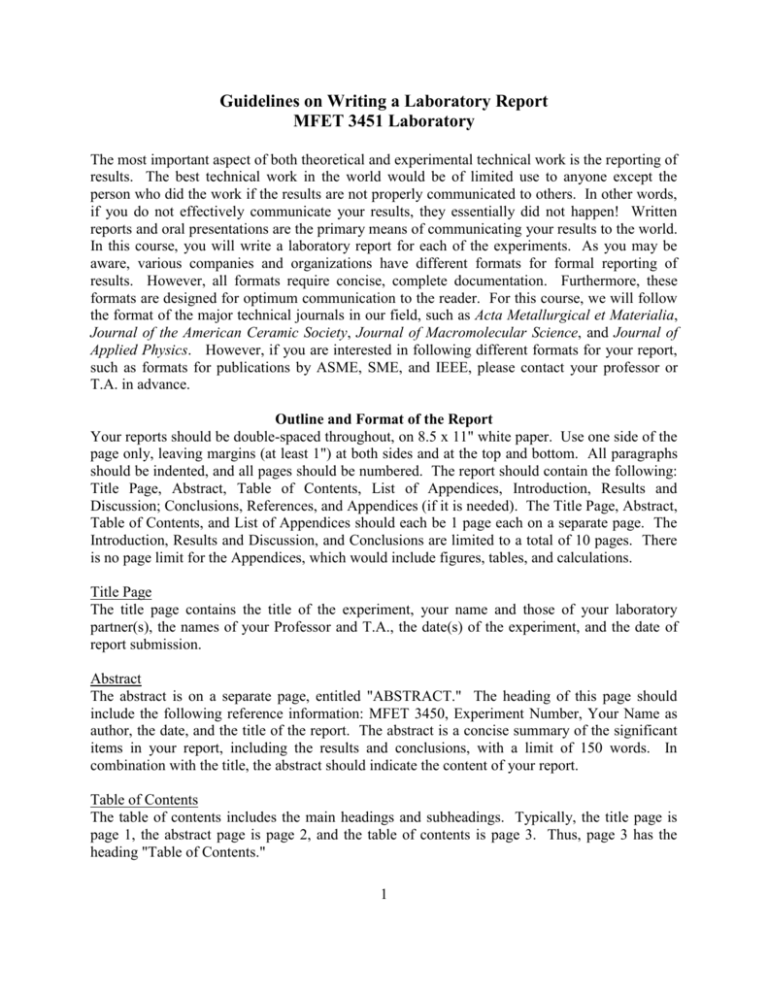
Guidelines on Writing a Laboratory Report MFET 3451 Laboratory The most important aspect of both theoretical and experimental technical work is the reporting of results. The best technical work in the world would be of limited use to anyone except the person who did the work if the results are not properly communicated to others. In other words, if you do not effectively communicate your results, they essentially did not happen! Written reports and oral presentations are the primary means of communicating your results to the world. In this course, you will write a laboratory report for each of the experiments. As you may be aware, various companies and organizations have different formats for formal reporting of results. However, all formats require concise, complete documentation. Furthermore, these formats are designed for optimum communication to the reader. For this course, we will follow the format of the major technical journals in our field, such as Acta Metallurgical et Materialia, Journal of the American Ceramic Society, Journal of Macromolecular Science, and Journal of Applied Physics. However, if you are interested in following different formats for your report, such as formats for publications by ASME, SME, and IEEE, please contact your professor or T.A. in advance. Outline and Format of the Report Your reports should be double-spaced throughout, on 8.5 x 11" white paper. Use one side of the page only, leaving margins (at least 1") at both sides and at the top and bottom. All paragraphs should be indented, and all pages should be numbered. The report should contain the following: Title Page, Abstract, Table of Contents, List of Appendices, Introduction, Results and Discussion; Conclusions, References, and Appendices (if it is needed). The Title Page, Abstract, Table of Contents, and List of Appendices should each be 1 page each on a separate page. The Introduction, Results and Discussion, and Conclusions are limited to a total of 10 pages. There is no page limit for the Appendices, which would include figures, tables, and calculations. Title Page The title page contains the title of the experiment, your name and those of your laboratory partner(s), the names of your Professor and T.A., the date(s) of the experiment, and the date of report submission. Abstract The abstract is on a separate page, entitled "ABSTRACT." The heading of this page should include the following reference information: MFET 3450, Experiment Number, Your Name as author, the date, and the title of the report. The abstract is a concise summary of the significant items in your report, including the results and conclusions, with a limit of 150 words. In combination with the title, the abstract should indicate the content of your report. Table of Contents The table of contents includes the main headings and subheadings. Typically, the title page is page 1, the abstract page is page 2, and the table of contents is page 3. Thus, page 3 has the heading "Table of Contents." 1 List of Appendices This section provides a list of the appendices included in the report. Note that any tabular data or plots referred to in the text of the report should be attached to the end of the report. Similarly, any lengthy calculations should be placed in the appendices. Introduction This section introduces the reader to the topic of the report. It contains the object of the experiment and any background information. The Introduction usually ends with a very specific statement of purpose. Experimental Procedures This section describes the methodology used for the experiment, including the materials used and specific procedures followed. Your explanation of the experimental procedures will allow the reader to evaluate and/or reproduce your experiment. Thus, for both the credibility of your results as well as for future developments based upon your results, this section is very important. Results and Discussion The results and discussion section presents the outcomes of the experiment(s). This section should be arranged in a logical sequence appropriate to the objectives of the experiment (which does not always correspond to the actual chronological order of the tasks!). In general, results are presented in graphs and/or tables (in the Appendix) and the results are described in words in the text. Next, the results are analyzed and interpreted. The analyses and interpretations are then used for the next section. Conclusions This section consist of a concise summary of the work and the conclusions and/or recommendations that you make based upon the work. Each conclusion and/or recommendation is supported by results and/or interpretations of results. References Most research and development projects rely on the results of other projects reported in journals and reports. The references are given in the form of a numbered listing at the end of the report. The references must be provided such that the reader will be able to locate them. We suggest the following form: [Reference number] Name of Author(s), "Title of Article", Name of Publication, Vol. Number, Publisher (Date of Publication), Page Numbers. [1] T. Michalske, "Quantitative Fracture Surface Analysis", in Engineered Materials Handbook, vol. 4: Ceramics and Glasses, ASM International (1987), pp. 652-662. Appendices This section includes tabular data (tables), plots, and lengthy calculations. Note that every table or plot should have a caption which briefly explains its content. Similarly, each calculation should have a title with brief explanation at the top of the page. Sets of tables, figures, and/or calculations should be numbered consecutively. 2

